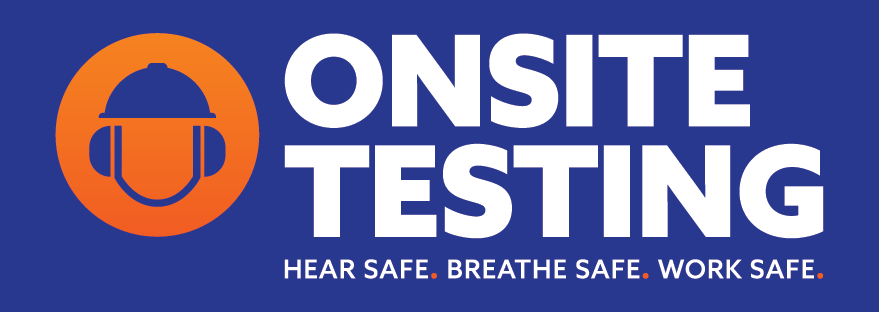Our sound testing services are designed to identify hazardous noise levels and help you meet your obligations under the Work Health and Safety Regulation 2011.
Using Class 1 Sound Level Meters, we assess sound exposure levels across your worksite (in accordance with AS/NZS 1269.1:2005) and provide a clear, compliant report that supports you to make informed decisions about hearing protection and control measures.
Our onsite services ensure minimal disruption to your operations, with results that support compliance and recordkeeping readiness.
Why it's needed
- From 29 July 2025, PCBUs (Employers) must provide audiometric testing for workers who need hearing protection due to noise levels exceeding the exposure standard:
- LAeq,8h of 85 dB(A)1, or (a worker’s average noise exposure over a standard 8 hour workday)
- LC,peak of 140 dB(C)2 (the loudest instantaneous noise peak a person is exposed to)
- Often workplaces have many or varied noise sources, or workers move in and out of noisy areas, and is not possible to easily determine if the noise levels exceed the exposure standard listed above. In these cases, a competent person should complete a noise test/assessment to determine the noise levels workers are exposed to.
- The results of a sound test/assessment will provide information to the PCBU (employer) that will help them decide:
o Whether or not the workers need to be provided with audiometric testing
o Appropriate hearing protection where other control measures are not practicable
o The effectiveness of any control measures
o What other measures to take to reduce noise - Failing to comply with audiometric testing requirements could result in penalties for the PCBU (Employers)
- Section 57(1) of the Work Health and Safety Regulation 2011 states that a PCBU (Employer) must manage risks to health and safety relating to hearing loss associated with noise, and
- Section 34 of the Work Health and Safety Regulation 2011 states that a PCBU must identify reasonably foreseeable hazards that
could give rise to risks to health and safety.
What it is
- A sound test/assessment uses sound level meters and a formal process to calculate and report the noise levels workers are exposed to in a workplace.
- A sound test/assessment determines whether employees are exposed to hazardous levels of noise that could cause hearing loss or require hearing protection measures.
How it's done
- It is done using sound level meters, and a systematic approach in accordance with AS-NZS-1269.1 and includes:
- a test/assessment during a typical working shift and determines:
- the noise levels produced during various tasks carried out during the shift
- the workers exposure levels to noise during each of these tasks.
- a test/assessment during a typical working shift and determines:
- The test/assessment considers:
- The plant, equipment and other sources of noise in operation at the workplace
- How the work activities are carried out
- The length of the shift
- Any relevant environmental factors (e.g. types of walls, surfaces, layout of workstations).
What’s included
- A compliant report in accordance with AS-NZS-1269.1 which provides the following details:
- Details of operation and address
- The area where the noise testing was conducted
- What the work activity was
- The noise measurement position
- The average noise exposure over a standard 8-hour workday, – LAeq,8h of 85 dB(A)1
- The loudest instantaneous noise peak a person is exposed to, – LC,peak of 140 dB(C)2
- The time the noise measurement was taken
- The duration of time the worker was exposure to the noise
- The number of workers exposed
- Any relevant test/assessment comments
- Client recommendations

Request a Quote
Frequently Asked Questions
What is noise test/assessment?
A noise test/assessment is a formal process used to calculate and report the noise levels workers are exposed to in a workplace. A PCBU (Employer) can then use the results to determine whether employees are exposed to hazardous levels of noise that could cause hearing loss or require hearing protection measures.
Why do I need a noise test/assessment?
The results of the noise test will provide you with information that will help you to determine:
- Whether or not the workers need to be provided with audiometric testing
- Appropriate hearing protection where other control measures are not practicable
- The effectiveness of any control measures
- What other measures to take to reduce noise
How it's done
- It is done using sound level meters, and a systematic approach in accordance with AS-NZS-1269.1 and includes
- a test/assessment during a typical working shift and determines:
▪ the noise levels produced during various tasks carried out during the shift - the workers exposure levels to noise during each of these tasks.
- a test/assessment during a typical working shift and determines:
- The test/assessment considers:
- The plant, equipment and other sources of noise in operation at the workplace
- How the work activities are carried out
- The length of the shift
- Any relevant environmental factors (e.g. types of walls, surfaces, layout of workstations).
Who can do a noise test/assessment?
A noise test/assessment must be performed by a competent person, who, through a combination of training and experience, have acquired the knowledge and skills to competently perform the assessments and to present the results in a manner which will enable the people in the workplace to make the correct decisions on what measures to take to reduce noise.
Our testers here at Onsite Testing are trained and experienced in the aspects of noise testing/assessments and meet the requirements of a competent person.
